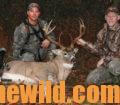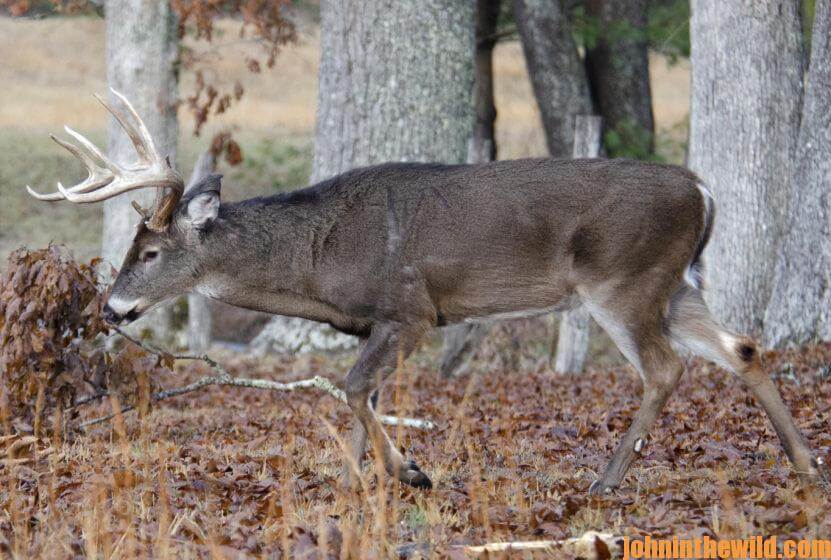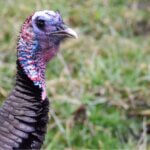Editor’s Note: Through the years in any hunting camp I’ve been in, a track expert, who can tell the size, sex and age of a deer by its tracks, always has been in residence. I’ve stalked deer before that the width of their tracks has convinced me they’re bucks. Also I’ve had hunters tell me that seeing the dew claws as part of the deer track is a definite indication that the animal that has made the track is a buck. Because so much misinformation exists about deer tracks, and what information they can communicate to those of us who hunt, I’ve talked to wildlife biologists and avid deer hunters to learn the truth about deer tracks.

 The first time someone told me he had seen a big buck’s track on a dirt road headed into a thicket, I wondered how he knew the difference between a buck’s track and a doe’s track. I was both amazed and mystified at his vast knowledge of whitetails.
The first time someone told me he had seen a big buck’s track on a dirt road headed into a thicket, I wondered how he knew the difference between a buck’s track and a doe’s track. I was both amazed and mystified at his vast knowledge of whitetails.
“In my opinion, the only sure way to know if a deer track you’ve found is that of a buck or a doe is to see that animal standing in its track,” says Dr. Bob Sheppard, an avid, longtime bowhunter and bowhunting instructor at many deer-hunting schools.
Although most wildlife scientists agree with Sheppard, Bob Zaiglin, longtime Texas wildlife biologist, explains, “Knowing the lay of the land is more important to bagging a buck than seeing deer tracks. But some experienced hunters can distinguish a buck by the size of the track and more importantly by the spread of the feet. A buck’s dew claws hang down somewhat, and sometimes a buck will drag his feet and turn a little more dirt up when he walks than a doe does. In south Texas where most of the state’s ranchers are, knowledgeable veterans can tell a buck from a doe because the bucks tear-up more ground than the does. However, the average neophyte will have a very-difficult time judging the sex of a deer just by footprints.”
Another wildlife biologist for South Carolina Game and Fish, believes hunters think they can determine the sex of the deer by the sizes of the deer’s tracks, which he says isn’t totally impossible. However, “In much of the East, probably 80% of the bucks being harvested are young animals. When the hunter spots a big track on the ground, more than likely he’s looking at the track of a large doe, since in many areas the does are allowed to live longer than bucks, become bigger as they get older and make larger tracks. However, in regions with snow, sand and/or mud, the buck may drag his feet and/or make deeper tracks.”
Harry Jacobson, once a professor in the Department of Wildlife and Fisheries at Mississippi State University, states that sometimes you can and sometimes you can’t tell the tracks of a buck from a doe. “If the tracks are very large, then a good chance exists that the tracks may have been made by a buck. But generally speaking, determining the sex of deer from tracks is very difficult.”
 Ronnie Groom, of Panama City, Florida, a deer-hunting instructor who hunts deer with bow and arrow, guns and muzzleloaders, comments that, “The medium the track is in, and the speed at which the deer is moving often determine the size of the track more than the weight and the size of the animal do, in my opinion. If a 100-pound doe jumps off a small hill onto a muddy road, she may leave a very-wide, big track with dew claws showing. But if a 250-pound buck walks up a hard clay creek bottom, he may not leave a very-wide track because the ground doesn’t give way and absorb the weight of his body, which will leave a bigger track. I personally try not to determine the sex of a deer by its track.”
Ronnie Groom, of Panama City, Florida, a deer-hunting instructor who hunts deer with bow and arrow, guns and muzzleloaders, comments that, “The medium the track is in, and the speed at which the deer is moving often determine the size of the track more than the weight and the size of the animal do, in my opinion. If a 100-pound doe jumps off a small hill onto a muddy road, she may leave a very-wide, big track with dew claws showing. But if a 250-pound buck walks up a hard clay creek bottom, he may not leave a very-wide track because the ground doesn’t give way and absorb the weight of his body, which will leave a bigger track. I personally try not to determine the sex of a deer by its track.”
I’m convinced anyone who hunts successfully needs to gather much-more information to be successful afield rather than trying to determine the sex of the deer by any of the track’s physical characteristics or its size.
 To learn more about hunting deer, check out John E. Phillips’ book, available in Kindle, print versions and Audible, “Whitetail Deer and the Hunters Who Take Big Bucks” at (http://amzn.to/2bYwYOK).
To learn more about hunting deer, check out John E. Phillips’ book, available in Kindle, print versions and Audible, “Whitetail Deer and the Hunters Who Take Big Bucks” at (http://amzn.to/2bYwYOK).
















